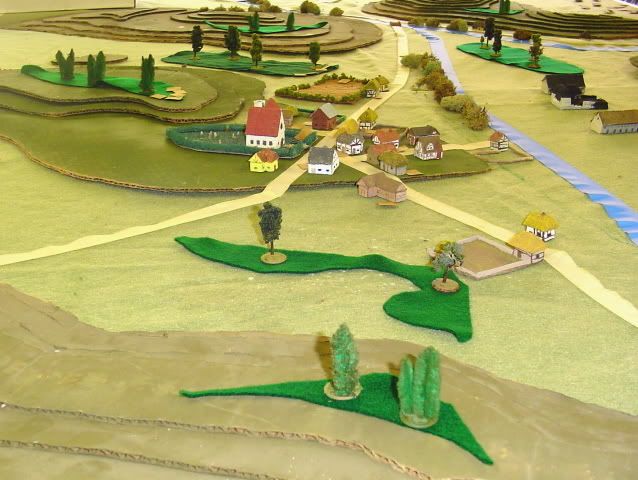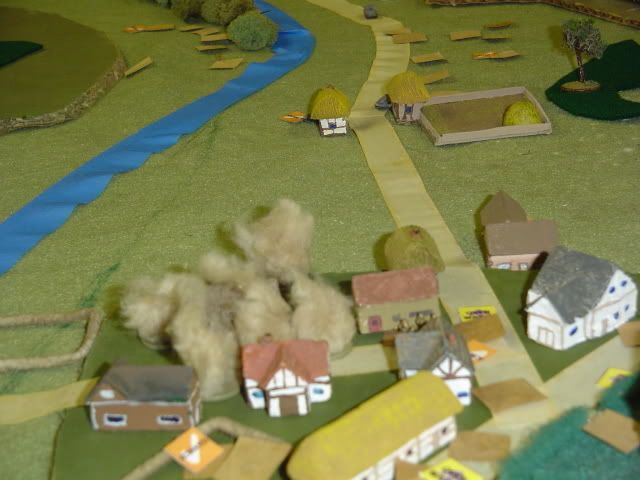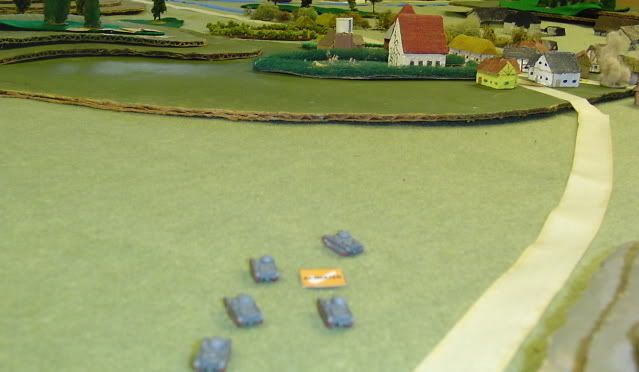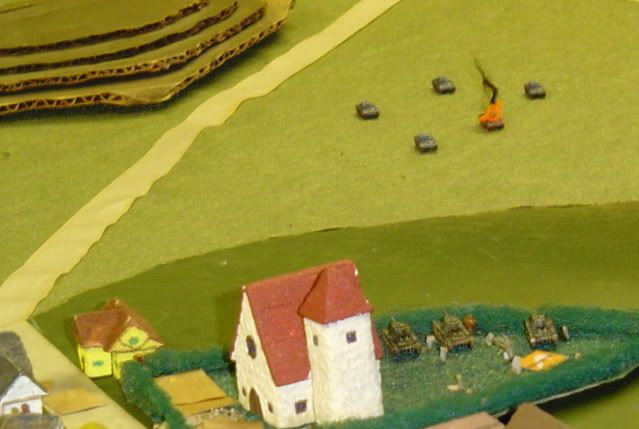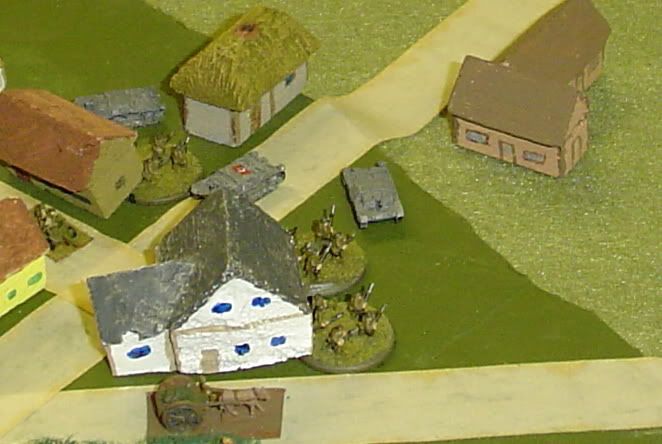The problem arises when we wargamers put waaayyy too many troops on the table relative to the space available. The reasons are many (legion?). Most often we simply want to use all of our toys. In other cases the ground scale and the figure ratio is out of sync so that too many toy soldiers, needed to represent a given level of command, are squeezed into an historical scale frontage. A prefect example is Flames of War in which games usually look like massed ancients battles rather than 20th century combat. As one friend noted (who plays FOW only to support the local club tournies) when his American armored infantry dismounts he barely has enough space to place the stands!
Microarmor seems prone to this problem which really preplexes me having returned to the scale about a year ago. I stuggled for a long time trying to get my 15mm WWII collection to look right with respect to troop density and it was tough! When I switched to microarmor for moderns I was very pleased with the visual result. I finally understood what my friend Mark Luther was on about when it came to 15mm vs microarmor. With the smaller models ranges and terrain could look more representational. With 6mm moderns troops looked properly dispersed.
But I've noticed too that some 6mm gaming still adheres to the hub-to-hub approach popular in the 70s. Even if the ground scale and figure ratio are "accurate" this looks really odd to me.
So, when you game, do you try to avoid this issue of high troop density or do you throw caution to the wind and squeeze as many troops on the table as possible? Does it bother you if a game's ground scale and figure ratio result in super high model density? Do you prefer a more visually representative approach with lower model density to reflect the "empty battlefield" character of modern war? (without being too extreme...these are VERY nice models after all!)
Tim

